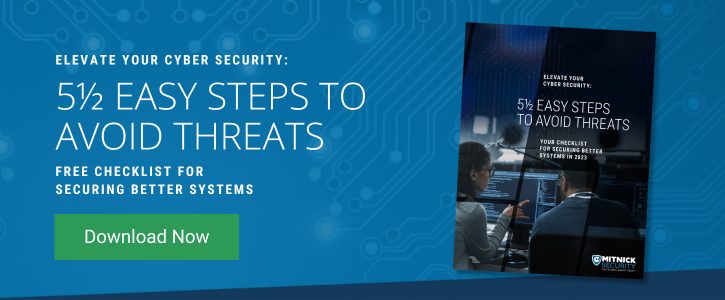As a CISO, you're always looking for the next big breakthrough to increase your organization's overall security posture.
Next-generation firewalls (NGFW), intrusion prevention systems (IPS), and sophisticated anti-virus software are great, but the answer to strong cybersecurity starts with your weakest link: your employees.
In fact, untrained employees are far more likely to lead to a breach than DDoS attacks or any other hacking technique.
In this article, we'll discuss why your team is your most significant security vulnerability. Plus, you’ll leave with a few ideas for protecting your organization from user deception through cybersecurity education, training, and testing.
Cyber Threats in the Modern Workplace
Gone are the days of storing all company assets behind an office building's locked doors. In recent years, many companies have taken on the hybrid workplace model, meaning CISOs must account for employees that are working both in the office and remotely.
Most workers are also using more devices than ever before. Smartphones are essentially portable computers containing a vast amount of corporate data — a huge vulnerability.
The sheer volume of tools, apps, cloud technologies, and devices creates a point of entry at every turn for social engineering attacks. Even if a tool or program isn't inherently malicious, an attacker could still use it as a means of entry if the creator did not design it securely, or if updates and patches are not installed.
It can feel impossible to protect all potential access points. This advanced landscape forces CISOs to depend on their employees to know how to defend themselves to at least some degree.
Social Engineering Attacks Against Employees
Generally speaking, the average employee is not going to act maliciously on purpose. Sure, there are cases of malicious insiders that seek to wreak havoc on an organization out of spite or for monetary gain, but this is far less common than an employee causing damage by accident. According to KnowBe4, only 3% of attacks rely on malware to exploit a technical flaw; the other 97% rely on social engineering.
Social engineering exploits every human's natural instinct to trust something that appears legitimate. Social engineers use Open Source Intelligence (OSINT) to gather information about their potential targets. Information on social media sites such as Facebook or LinkedIn and public-facing websites provide a plethora of data for a bad actor. Knowing enough about you, attackers can craft convincing and targeted attacks against you and your organization.
Without proper training on identifying a social engineering attack, employees are just sitting ducks for the attackers. Even with all of the security controls in the world, successful, sophisticated social engineering attacks occur. With technological advancements — such as ChatGPT — it’s harder to spot the difference between harmless spam and malicious phishing messages.
With all of this in mind, it's not difficult to see how your employees are your weakest link. Still, with adequate cybersecurity education and training, all employees can be your final and best line of defense. Realistically, an employee that can quickly and accurately spot a phishing email is far more valuable than a spam filter that experiences false positives and false negatives.
The Importance of Social Engineering Awareness Training
In the world of cybersecurity, the best defense is ultimately being on the offense. Simply put, this means that CISOs must be proactive rather than reactive to potential cyber threats. Social engineering awareness training arms your employees with the knowledge they need to recognize threat actors.
Along with training, an offensive approach to cyber security helps ensure you recognize the weaknesses within your security framework before your adversaries do.
For example, simulated attacks against your organization, whether through full-blown penetration testing or a simple simulated phishing attack, allow you to have an in-depth understanding of where the organization's weaknesses lie. Of course, a Red Team engagement provides a deeper look into the organization — as a whole as well as the flaws that exist from both a technical and educational standpoint.
Recent Enterprise Social Engineering Attacks
Before the 2016 presidential election, malicious actors from Russia sent spear-phishing emails to members of the Democratic National Convention's network. The result was attackers gaining access to thousands of confidential and sensitive emails regarding the Democratic candidate Hillary Clinton's campaign.
Don't think that it could happen to you? In 2022, Uber fell prey to a social engineering attack by an 18 year old. In fact, this threat actor used the same social engineering tactics to carry out a successful data breach of RockStar Games a few days later.
Uber employees are not the only ones to fall for a phishing attempt, and they won’t be the last. Verizon’s 2023 Data Breach Investigations Report provides evidence that threat actors have renewed their interest in social engineering.
Start Protecting Your Organization Today
As a CISO, there are several ways to improve your organization's security:
First, invest in employee cybersecurity education and training to empower your employees to think before they click.
Secondly, understand that even the most well-prepared organization can fall victim to crafty social engineering pretexts. Opting for pentesting tailored to your needs can help you spot your potential gaps in security.
For more actionable tips for protecting your organization in just 5 ½ short but high-impact steps download our guide.



